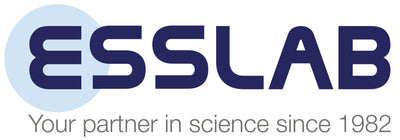Ion Chromatography
- Home
- Ion Chromatography
Ion chromatography (IC) is the separation and quantitative analysis of anions and cations in an ionic solution using the ion exchange method of liquid chromatography (LC).
The chromatographic process separates the different ions within the sample. The amount of an anion/cation is measured by the change in conductivity as the species passes through the detector.
The ions in the sample solution are carried through the system by an ionic solution, or eluent (mobile phase). The different ions in the eluent are separated in a column packed with an ion exchange resin (stationary phase). The resin has a thin surface layer of active material with limited ion exchange sites. If anions are to be analyzed, the active sites will have a fixed positive charge to attract the anions. Resins for cation analysis will have a negative charge. Individual ions attach and detach from the resins at a rate depending on the affinity of the specific ion to the active sites. Ions with greater affinity for the stationary phase are retained in the column for a longer time than those with less affinity for the stationary phase.
Thus, the ions of particular chemical species in the solution exit or elute from the column within a narrow time band specific to that ion. The detector at the end of the column continuously measures the conductivity of the eluent to determine the quantity of the eluting ions as a function of time. The data from the detector are compiled into a plot of ion abundance versus time, referred to as a chromatogram. The position of a peak in the chromatogram is characteristic of a specific ion. The peak size is a function of the concentration for the ion represented by that peak.
Applications of Ion Chromatography
Methods can also be performed on a diverse range of sample matrices allowing accurate reliable results.
The IC technique also allows detection of rarer anions such as Chlorite, Chlorate, Bromate and Acetate.
-
WHAT ARE YOU LOOKING FOR?Search
- Login / Register
- Reference Materials
- Liquid Handling
- Chromatography and Spectroscopy
- Testing
- Labware
- Resources
- Wishlist (0)
- Compare (0)
- Contact Us





